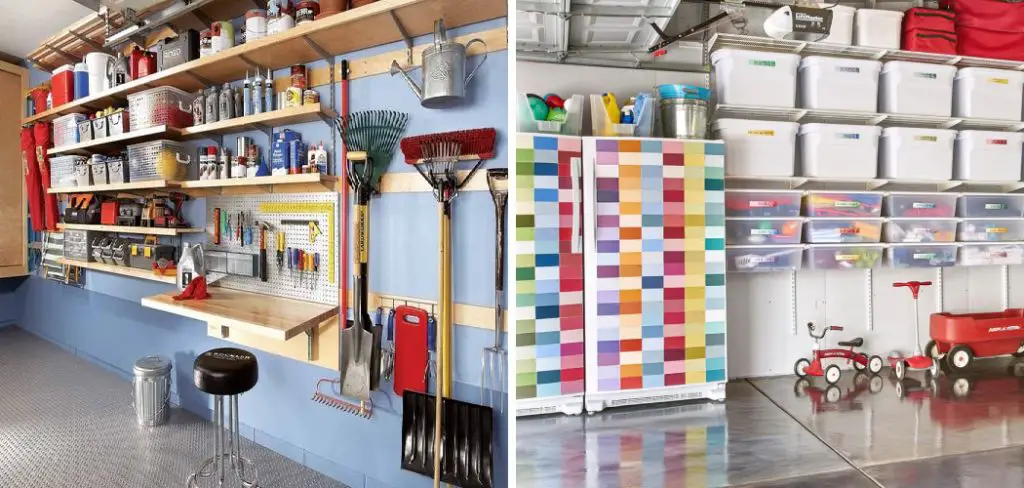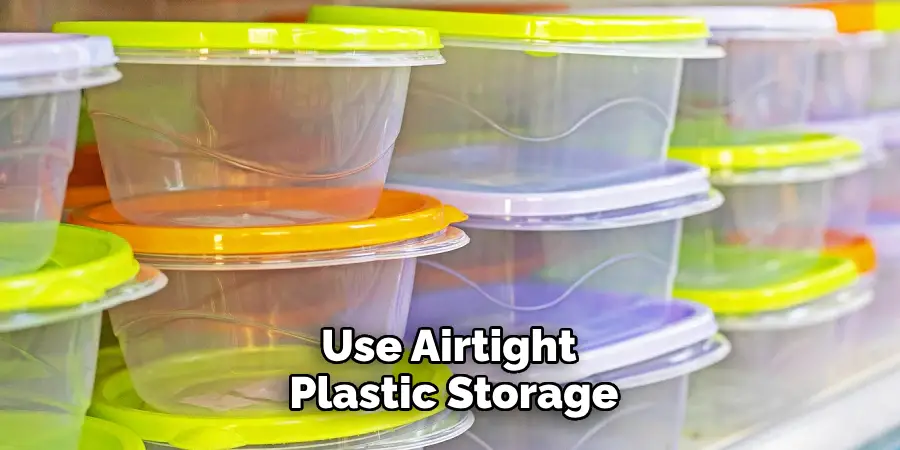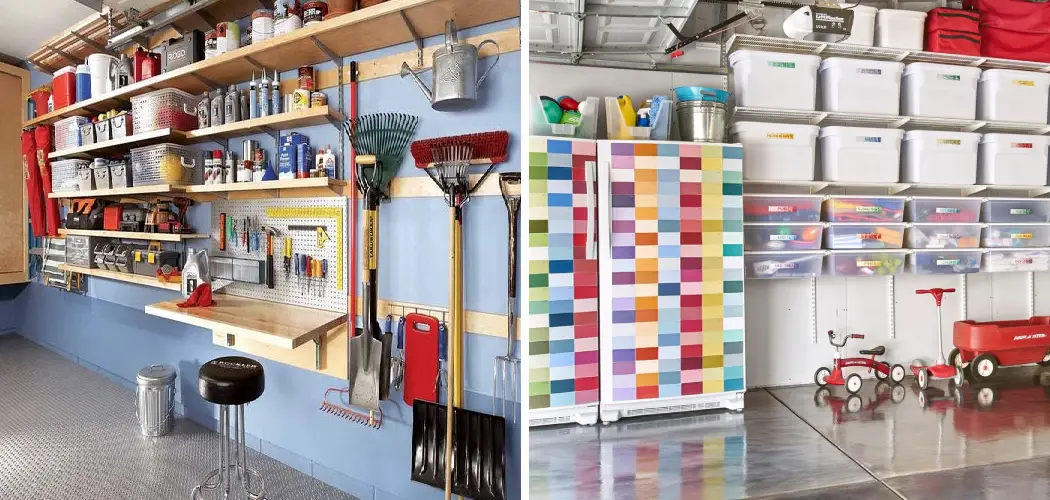Storing pictures in a garage can be a practical solution for those looking to declutter their living spaces while preserving cherished memories.

However, proper storage techniques are crucial to protect these valuable items from potential damage due to temperature fluctuations, humidity, and pests. In this guide, we will explore effective methods and materials for how to store pictures in a garage, allowing you to easily access and enjoy your treasured visuals whenever you wish.
Importance of Proper Storage Methods
Choosing proper storage methods for pictures is essential to ensure their longevity and maintain their original quality. Photographs are sensitive to environmental conditions; exposure to extreme temperatures and humidity can lead to fading, warping, or even mould growth.
By utilising appropriate containers and materials, such as acid-free boxes and archival-quality sleeves, you can provide a protective barrier against these hazards.
Furthermore, organised storage makes it easier to locate specific images when needed, creating a more efficient retrieval process. Ultimately, investing time and effort into the correct storage techniques not only safeguards your memories but also ensures that future generations can enjoy them in their best condition.
Understanding the Risks of Storing Pictures in a Garage

While garages can offer convenient storage space for pictures, there are several risks to consider that can jeopardise the integrity of your photographs. Temperature fluctuations are a significant concern; garages often experience extreme hot or cold conditions, which can cause photographs to expand and contract, leading to warping or cracking. Additionally, fluctuating humidity levels can result in moisture accumulation, potentially fostering mould and mildew growth on the surface of your pictures.
Moreover, garages may also be prone to pests like rodents and insects that can damage stored items. Without adequate protection, photos can become a target for these uninvited guests. Understanding these risks emphasises the importance of selecting appropriate storage solutions and locations to ensure that your precious memories are preserved safely for years to come.
10 Methods How to Store Pictures in a Garage
1. Use Climate-Controlled Storage

One of the most effective ways to store pictures in a garage is to create a climate-controlled environment. Photographs and pictures are sensitive to temperature extremes and humidity, which can cause fading, warping, or mildew growth.
If your garage is prone to temperature swings, consider installing a small air conditioner, dehumidifier, or space heater to regulate the environment. The ideal temperature for storing photos is around 65-75°F with a humidity level of 30-50%. This method ensures that your pictures are not exposed to extreme conditions that could deteriorate their quality over time.
2. Store Pictures in Acid-Free Storage Boxes
Using acid-free storage boxes is essential for preserving pictures over time. Ordinary cardboard boxes may contain acids that can cause photographs and printed images to yellow or become brittle.
Acid-free boxes are specially designed to be pH-neutral, preventing damage to sensitive paper materials. Place your pictures, whether they are loose prints or albums, inside these boxes, ensuring that they lie flat to prevent bending or curling. Label each box clearly to keep track of the contents and store the boxes on shelves to keep them off the floor and away from potential moisture.
3. Use Plastic Storage Bins with Tight-Sealing Lids
Another great option for storing pictures in a garage is to use airtight plastic storage bins with tight-sealing lids.

These bins help protect your photos from moisture, dust, and pests, all of which can wreak havoc on paper and framed items. Choose clear plastic bins for easy identification of contents or label them to avoid unnecessary opening and handling. Be sure to place some silica gel packets or moisture-absorbing products inside the bins to reduce humidity and keep the interior dry. This method provides an extra layer of defense against the sometimes harsh garage environment.
4. Store Pictures Vertically to Prevent Warping
When storing framed pictures or albums, it’s important to store them vertically to avoid warping or bending. Laying them flat can cause heavy items on top to compress the pictures, leading to distortion or creasing.
For framed art, use specially designed racks or shelves to store them upright with sufficient space between frames to prevent them from leaning or sticking together. If you’re storing albums or loose prints in boxes, place them vertically inside the containers to minimize the risk of bending or curling, especially in humid conditions.
5. Wrap Framed Pictures in Protective Padding
For framed photos or art, wrapping them in protective padding is essential to prevent scratches, dents, or cracks. Use bubble wrap, foam sheets, or acid-free tissue paper to wrap the frames before placing them in storage.
Be sure to secure the padding with packing tape to keep it from unraveling. This protective layer will also help protect the glass from breaking and the frame from becoming chipped if bumped or jostled during storage. For extra protection, you can place the wrapped frames in sturdy cardboard or wooden crates before placing them in the garage.
6. Keep Pictures Off the Ground

Storing pictures directly on the garage floor is a recipe for disaster. Moisture can seep in from the concrete or accumulate from leaks, causing water damage or mold to form on your pictures.
To prevent this, always keep pictures off the ground by storing them on shelves, racks, or pallets. If you don’t have shelving, invest in some sturdy metal or plastic shelving units that are resistant to rust and water damage. By keeping pictures elevated, you protect them from any accidental water exposure and also from pests that may scurry along the floor.
7. Use Desiccant Packets to Control Humidity
Since garages are not always climate-controlled, humidity is a major concern when storing pictures. Excessive moisture can cause mold, mildew, or curling of paper products. To counteract this, place desiccant packets (like silica gel) in your storage boxes or bins to absorb moisture.
You can also use moisture-absorbing products like DampRid to control the humidity levels in the garage. These products help maintain a dry environment, protecting your pictures from moisture damage and keeping them in pristine condition over time.
8. Avoid Direct Sunlight
Exposure to direct sunlight can cause photographs and art to fade, reducing their visual quality. If your garage has windows, sunlight might be an issue, especially during certain times of the day To prevent this, store your pictures in a shaded area of the garage, away from windows or light sources. You can also cover your storage boxes or bins with blankets or tarps to block out any incidental light. Installing curtains or blinds on the garage windows will help reduce the amount of sunlight entering the space, thereby protecting your pictures from harmful UV rays.
9. Use Picture Storage Containers for Small Items
If you have small photo prints or delicate items like negatives and slides, consider using specialized picture storage containers. These containers are typically made of archival-quality materials, designed to prevent damage from acids, humidity, and UV light. Many come with individual sleeves or compartments to separate each photo or negative, preventing them from sticking together or scratching. Organizing smaller pictures in these containers will help preserve their quality and keep them safe from the harsher conditions of the garage.
10. Monitor the Condition of Stored Pictures Regularly
Even after you’ve taken precautions to properly store your pictures in the garage, it’s important to check on them periodically. Set a reminder to inspect the storage bins, boxes, or shelves at least twice a year to ensure that the pictures are still in good condition.
Look for signs of moisture, mold, pest damage, or warping. If you notice any issues, take immediate action, such as replacing silica gel packets or moving the pictures to a better location. By regularly monitoring your stored pictures, you can catch problems early and prevent irreversible damage.
Things to Consider When Storing Pictures in a Garage
When storing pictures in a garage, there are several key factors to keep in mind to ensure their longevity and protection. Firstly, consider the temperature fluctuations typical of garage environments, as excessive heat or cold can adversely affect both photographs and frames.
Choosing a location with minimal exposure to extreme temperatures will help mitigate risks. Additionally, be mindful of potential contamination from garage chemicals or tools. Ensure that pictures are stored away from solvents, paints, and other hazardous materials to prevent unwanted damage. Finally, think about accessibility; placing important photos or items in a location that’s easy to reach will make it simpler to regularly inspect and maintain their condition.
Conclusion
Storing pictures in a garage requires careful planning and attention to detail due to the environmental challenges that garages often present.
By following these ten methods—using climate control, acid-free boxes, airtight bins, and protective padding—you can effectively protect your photos, art, and albums from moisture, pests, and temperature extremes. Keeping the pictures off the ground, monitoring humidity, and avoiding direct sunlight will further safeguard them, ensuring that your cherished memories remain preserved for years to come. Thanks for reading, and we hope this has given you some inspiration on how to store pictures in a garage!
I am Rick. I grew up helping my dad with his handyman service. I learned a lot from him about how to fix things, and also about how to work hard and take care of business. These days, I’m still into fixing things- only now, I’m doing it for a living.
I’m always looking for new ways to help people grow and develop. That’s why I have created this blog to share all my experience and knowledge so
that I can help people who are interested in DIY repair.

